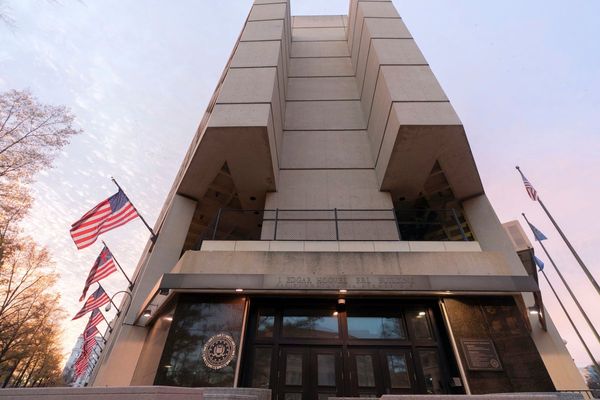
The US and UK seem to have concluded that trying to accommodate the crypto industry is better than allowing it to flourish overseas. Stablecoins could be the way forward
Comment: This year has seen some unusual twists and turns in the world of cryptocurrency, even for a technology with a track record of turbulence. Crypto has taken an unlikely supporting role in the war in Ukraine, starting with Ukrainian leaders explicitly seeking cryptocurrency donations to help finance new military equipment. Over $100 million of crypto donations have subsequently rolled in, and President Zelenskyy has since signed a bill to legalise cryptocurrency as an asset class in Ukraine.
Crypto has long been associated with a small cabal of young, rich “crypto bros”, but examples such as those from Ukraine point to a much broader picture of what, and for whom, the technology represents.
Illia Polosukhin, the organiser of Unchain, a charity distributing humanitarian aid in Ukraine, points out that “a bitcoin transaction takes 10, 20, 30 minutes versus a wire transfer that might take two or three days, and you can’t be sure of that - by then [the Russians] might have bombed a national bank”. Polosukhin also notes that crypto, being digital, means that Ukrainian refugees can access funds without needing to carry cash.
After graduating from a perceived Ponzi scheme to a technology with real-world utility and a laundry list of new applications, crypto is increasingly recognised as a legitimate force of technological change. For all the decidedly mixed sentiment about applications such as non-fungible tokens, the adoption and use of cryptocurrency is tracking like the early growth of the internet. The number of crypto users doubled in 2021 across the Asia Pacific, United States and Latin America according to one study, even as cryptocurrency prices inch downwards. It’s not easy to write this level of sustained growth off as a fad or bubble any more, and countries are starting to consider how crypto will fit into their existing economic and legal systems.
Some spy opportunity in the cryptosphere. The British government has just announced a suite of policies to try to make Britain “a global hub for cryptoasset technology”. In particular, the government set out plans to recognise stablecoins as a legal form of payment - a category of cryptocurrencies that are pegged, often to a fiat currency such as the US dollar or the euro.
Stablecoins provide many of the advantages associated with mainstream cryptocurrencies (fast transactions, the ability to interact with ‘smart contracts’ - self-executing programs that are programmed on to a blockchain), without the volatility of prices rocketing up and down. They are not ‘illegal’ per se in most jurisdictions, but they operate in a grey area that tends to make traditional financial institutions and companies nervous.
It is a big shift for a major economy such as Britain to formally recognise stablecoins, burnishing the technology with Her Majesty’s stamp of legitimacy. This kind of policy is always going to meet with criticism, and the timing of the announcement did the UK government no favours. On the same day, the governor of the Bank of England made a stern speech on the risks of this new technology. He described cryptocurrency as “the new front line for scams” and “an opportunity for the downright criminal”.
While it may seem strange for Britain to cheerfully roll out the red carpet in the face of these warnings, bringing cryptocurrency within the state’s regulatory framework doesn’t mean that scammers get a free ride. The opposite is more likely: while the proposed policy allows stablecoin issuers to legally operate in Britain, they must abide by new regulatory guidelines and oversight to do so.
Other countries are also beginning to walk this regulatory tightrope, looking to bring legitimate cryptocurrency activity into the fold of the legal system while also addressing fraud, scams and other unsavoury corners of the cryptosphere. The Executive Order issued by the Biden White House last month encapsulates this dilemma.
The Executive Order directed federal agencies to take an approach to cryptocurrency that protects Americans from “illicit finance risks, including money laundering, cybercrime and ransomware”, and also ensures America “remains at the forefront of … development and design of digital assets and the technology that underpins new forms of payments and capital flows”. Ignoring calls from leading Democrats such as Elizabeth Warren that the federal government should crack down on the crypto industry, the Biden administration framed their approach as instead seeking to encourage “responsible innovation”.
A streak of pragmatism is discernible through each of the varying approaches taken by Ukraine, Britain and the US. Ukraine is obviously in a battle for its own survival and will justifiably latch on to whatever tools may prove helpful. The UK and US have their own self-interest, of course, as leading financial centres of the global economy. These governments would probably prefer not to see decentralised cryptocurrencies proliferate at all, given the possible long-term risk to their respective monetary systems. But they seem to have concluded that trying to accommodate the crypto industry is the lesser evil compared with allowing it to flourish overseas.
This fascinating dynamic of centralised states reckoning with decentralised technologies and economies is complicated further by the fact that most countries’ central banks, including New Zealand’s, are actively exploring central bank digital currencies. These are essentially cryptocurrency adaptations of a nation’s fiat currency (such as the NZ dollar) and may change the way we think about money and how it works.
How crypto is put to use is changing, as shown in Ukraine, and the underlying technology also continues to evolve and develop. These shifting sands present some tricky regulatory questions, but it is encouraging to see some countries start to map a path forward.







